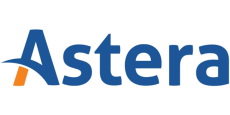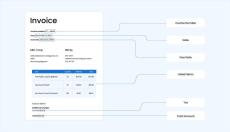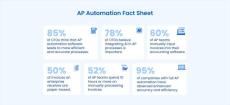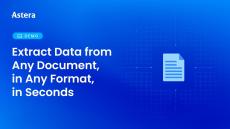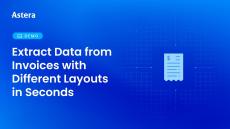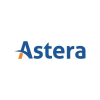|
By Usman Hasan Khan
Invoice management is an important task regardless of the size of your business, but it can quickly become overwhelming due to the sheer volume of invoices, varying formats, and the need for accurate tracking and timely payments. Manual processes with paper invoices are time-consuming, often leading to errors, delays, and difficulty in maintaining organized records. However, with the right invoice processing software, you can streamline invoice management, saving time and reducing errors.
This year generative AI led to more disruption and innovation than ever before. Investment in AI research is expected to cross the $200 billion mark next year. The figure stood at $92 billion in 2022. AI has changed the world as we know it in 2024. This is true of how our relationship with AI has changed this year. We adopted it into our solutions through Astera Intelligence. But Astera Intelligence is just the tip of the iceberg of the things we accomplished this year…
|
By Mariam Anwar
Invoice scanning software is a tool that helps businesses process invoices quickly and accurately by digitizing and extracting critical information from them. It uses technologies like optical character recognition (OCR) to read invoice details such as vendor names, dates, amounts, and line items. This software is especially useful for accounts payable teams and businesses that deal with a high volume of invoices, making their financial processes faster and more reliable.
|
By Khurram Haider
Businesses send and receive several invoices and payment receipts in digital formats, such as scanned PDFs, text documents, or Excel files. While digital formats have allowed workplaces to transition to a paperless environment, they have introduced a new challenge for business analysts: extracting the data from invoices and using it to draw relevant insights.
|
By Brooke Bethel
Everyone wants the same thing: To work less and profit more. But not everybody knows how to achieve those things. At Astera, we’re pretty sure we’ve cracked the code, and you might be surprised to learn that it starts with how you process your documents.
|
By Mariam Anwar
Remember when you had to stand in long lines at the store, waiting for a cashier to check out your items? Or think back to when factories relied entirely on human hands to assemble products, one piece at a time. Fast forward to today, and self-checkout machines have made waiting in line a thing of the past, while robots on assembly lines are handling repetitive tasks with speed and precision.
|
By Brooke Bethel
For the past ten years, Astera has been serving enterprise customers to extract, integrate, and store data. Our solution has been trusted to handle large volumes of data with complicated needs. So what is it exactly that makes Astera the right choice for these enterprises?
Logistics industry has to deal with data from multiple sources including bills of lading, customs declaration forms, proofs of delivery, and others. Then they have to ensure the data is prepped, extracted, parsed, converted to the right format and then analyzed. Given how important logistics is in today’s market, it is no wonder that McKinsey Global Supply Chain Leader Survey 2024 reported 74% of respondents were interested in advanced digital and AI-based tools for planning and scheduling.
|
By Raza Ahmed Khan
It’s 2025, and manual finance workflows are a thing of the past—or at least they should be. Enterprises and organizations in the healthcare, financial services, logistics, and retail sectors deal with thousands of invoices daily. Considering the high volume, automation is the obvious solution to ensure efficient and streamlined operations.
|
By Raza Ahmed Khan
Accounts payable (AP) automation is on the rise as finance teams are realizing the benefits of AP automation solutions currently on the market. Teams that achieve partial automation in their AP processes are seeing considerable benefits in terms of time, cost, and efficiency. With vendors now integrating AI technologies into their software solutions, the potential AP automation benefits promise to change the face of accounts payable altogether.
|
By Astera
Processing medical reports from various labs, clinics, and hospitals can be smooth and efficient with Astera. No matter the format or source, Astera simplifies every step of the process. Automatically ingest reports, extract key data fields like patient details, test results, and diagnoses with precision and deliver clean, ready-to-use data straight to your EMR systems, databases, or Excel. With Astera, your team can save time, reduce manual effort, and focus on delivering faster, more accurate patient care.
|
By Astera
You can now automate EDI transactions and save time spent manually updating claims, records, and invoices using Astera's EDIConnect.
|
By Astera
Handling large volumes of diverse data from multiple sources typically involves consolidation, reconciliation, and integration into new formats. It may seem like this process would demand more time and IT resources. But with Astera, you can automatically ingest data from multiple sources, automatically parse and map it, and deliver it to your preferred destination, without relying on any IT support.
|
By Astera
Automate your document processing with Astera! Upload invoices, purchase orders, reports—whatever you’ve got—and let our AI handle everything. It identifies formats, maps fields (even if they’re named differently), extracts data in seconds, and writes it directly to your chosen destination.
|
By Astera
Astera makes invoice processing faster, more reliable and fully automated. Just drag and drop your files, and let AI detect the layout to capture and extract data in seconds.
|
By Astera
In this webinar, our experts- Jay Mishra and Abdullah Rafiq, demonstrate how Astera Intelligence can streamline data extraction, improve accuracy, and eliminate manual intervention. Explore how we can help you.
|
By Astera
With minimal human intervention, you can gain BI insights faster through our automated data warehouse design, development, deployment, and maintenance.
|
By Astera
In this video, we will learn how to add tags to a Data Asset in Astera's Data Governance Platform.
|
By Astera
In the insurance industry, the claims process plays a vital role in shaping an insurer's reputation, customer satisfaction, and financial performance. However, this process is primarily characterized by the substantial volumes of unstructured data that insurers must adeptly handle and leverage to enhance the customer journey and streamline claims lifecycle management.
|
By Astera
The big increase in data, more sources of data, and the need for quick insights mean companies have to move away from slow, fixed methods of handling data. Dynamic ETL emerges as a timely solution, offering the flexibility to process data in real time, adapt to changing formats seamlessly, and scale operations efficiently.
|
By Astera
The education sector has always worked with data to guide various processes, most notably student progress. But with powerful, AI-driven data extraction tools impacting other industries, it's time for educators to leverage these tools, accelerate data extraction, and turn data into actionable insights much faster.
|
By Astera
A Single Customer View (SCV) is crucial for optimizing marketing ROI from a tech standpoint as it consolidates data from diverse channels, offering a complete customer profile.
- January 2025 (3)
- December 2024 (14)
- November 2024 (3)
- October 2024 (26)
- September 2024 (19)
- August 2024 (22)
- July 2024 (18)
- June 2024 (22)
- May 2024 (24)
- April 2024 (14)
- March 2024 (26)
- February 2024 (10)
- January 2024 (4)
- December 2023 (6)
- November 2023 (1)
Astera Software is a rapidly-growing provider of enterprise-ready data management solutions. Our goal is to make data-driven insights more accessible than ever through no-code, user-friendly, and automated data extraction, data integration, data warehousing, API management, and EDI solutions.
Features of Astera Centerprise:
- Support for Diverse Systems: Connectivity to a range of structured, unstructured, and semi-structured data sources, including databases, web services, data warehouses, and flat file formats, such as delimited and CSV is the basic staple of all information mapping tools.
- Graphical, Drag-and-Drop, Code-Free User Interface: A code-free environment to create mappings and a graphical, drag-and-drop UI to process data using built-in transformations.
- Ability to Schedule and Automate Jobs: The ability to orchestrate a complete workflow using time and event-triggered job scheduling is a valuable feature in a tool. This automation cuts down the manual work, improving productivity and saving time.
- Instant Preview Feature for Real-Time Testing: Intuitive features like Instant Data Preview help prevent mapping errors at the design time. This functionality lets the user view the processed and raw data at any step of the data process.
- SmartMatch Data Conversion Mapping for Resolving Naming Conflicts: Synonym-driven file reading to resolve discrepancies in field names and business data lineage function to address the challenges of naming conflicts. It can be done by defining synonyms for a word in the synonym dictionary of a particular project.
Empowering Enterprises Across the Globe to Turn Data into Insights at Lightning-fast Speed!



